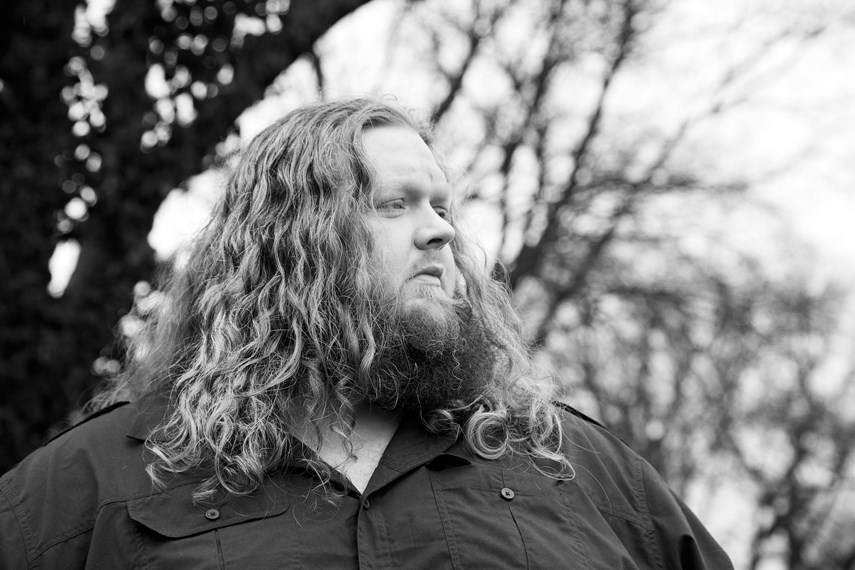Matt Andersen & the Mellotones, UBC’s Chan Centre for the Performing Arts, Thursday, April 25, 8 p.m. (tickets.ubc.ca).
Before the music there’s muttering.
If you’re an outgoing optimist, it sounds like a surprise party waiting on the other side of your front door. If you’re a socially awkward pessimist, it also sounds like a surprise party waiting on the other side of the door.
It’s the last track from Matt Andersen’s 13th album: Halfway Home by Morning. The guitar-driven blues and soul release was recorded in a Nashville, Tennessee studio at a rate of three tracks a day.
On the last day, with 12 songs already bound for vinyl, Andersen thought about getting a present for his Mom.
He’d written a ballad called “Quarter on the Ground (A Song for Uncle Joe)” about that universal, unfulfillable need to have one last conversation with a loved one who’s gone.
Andersen wanted to give that song to his Mom – and if his gift was recorded in a studio with the McCrary Sisters providing backing vocals, all the better.
“I just asked them if they would do one more song,” he recalls.
The quartet of gospel luminaries agreed.
Andersen handed them the lyrics.
They had one microphone. They did one take.
The first sound you hear is muttering as Andersen says someone looks “just about ready.” The guitar comes in.
“Why can’t you just pick up the telephone? I need to hear you say hello,” Andersen sings.
The McCrary Sisters come in just underneath Andersen’s voice with the soft tones you’d use to console a friend. But by the end of the song the McCrary Sisters aren’t following Andersen. They’re waiting for him, prompting the New Brunswick singer’s voice to get bigger and bluer.
“You can’t just go in easy, you’ve gotta make sure you stack up,” Andersen says of singing with the Sisters.
The song inadvertently ended up mixed up with the other 12 tracks, Andersen says.
“When my manager heard it he didn’t know the difference, he thought it was supposed to be part of (the album).”
Given that the album was produced by Steve Dawson, a singer/songwriter with a predilection for recording fast and hoping for happy accidents along the way, the misunderstanding is perfectly understandable.
Dawson has warned that over-planning can “suck the life” out of a song. That philosophy intersected with Andersen’s plan to do an album “live off the floor.”
“Not everybody’s into doing that kind of recording. But for Steve, I think that’s his comfort zone,” Andersen says.
Halfway Home by Morning was culled from 25 or 30 songs written since Andersen’s 2016 album Honest Man. The best songs were written with friends after dinner, he says.
“You write until you can’t write anymore I guess and you pick the best out of that.”
When Andersen talks about picking the best, he doesn’t mean the most likely hit singles or radio friendly riffs.
“Sometimes that gets in the way of how you make an album if you try to worry about radio play and all that kind of stuff. This time I didn’t worry about that,” he says. “I figured if I was the first person to like it whatever happens after that: candy.”
Asked about the best way to hear the album, Andersen hesitates.
“I don’t want to sound like one of those guys,” he begins with a chuckle. “But vinyl’s really the best way to hear it. . . . I think you’re missing out on a lot sometimes when you hear things on tiny headphones or your computer speakers.”
In order to get that sound across to a live audience, Andersen is touring with a nine-piece band including Halifax R&B staple The Mellotones as well as Dawson on guitar. Wild Rivers is opening.
“You don’t get to see a lot of bands touring with nine people anymore and making that kind of music on stage,” he says.
The album draws on the soul music tradition forged by singers like Bill Withers and Al Green, Andersen notes.
“There’s nothing fancy there. There’s nothing there that isn’t real music.”



